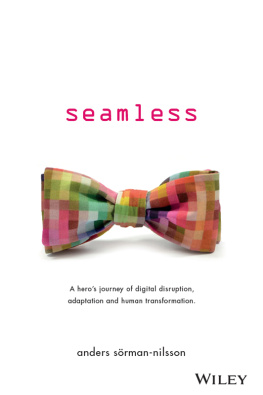NILSSON
Nilsson
THE LIFE OF A SINGER-SONGWRITER
Alyn Shipton


Oxford University Press is a department of the University of Oxford. It furthers the Universitys objective of excellence in research, scholarship, and education by publishing worldwide.
Oxford New York
Auckland Cape Town Dar es Salaam Hong Kong Karachi
Kuala Lumpur Madrid Melbourne Mexico City Nairobi
New Delhi Shanghai Taipei Toronto
With offices in
Argentina Austria Brazil Chile Czech Republic France Greece
Guatemala Hungary Italy Japan Poland Portugal Singapore
South Korea Switzerland Thailand Turkey Ukraine Vietnam
Oxford is a registered trademark of Oxford University Press
in the UK and certain other countries.
Published in the United States of America by
Oxford University Press
198 Madison Avenue, New York, NY 10016
Alyn Shipton 2013
All rights reserved. No part of this publication may be reproduced, stored in a retrieval system, or transmitted, in any form or by any means, without the prior permission in writing of Oxford University Press, or as expressly permitted by law, by license, or under terms agreed with the appropriate reproduction rights organization. Inquiries concerning reproduction outside the scope of the above should be sent to the Rights Department, Oxford University Press, at the address above.
You must not circulate this work in any other form
and you must impose this same condition on any acquirer.
Library of Congress Cataloging-in-Publication Data
Shipton, Alyn.
Nilsson : the life of a singer-songwriter / Alyn Shipton.
pages ; cm
Includes bibliographical references and index.
ISBN 9780199756575 (hardback :alk. paper) 1. Nilsson, Harry.
2. SingersUnited StatesBiography. I. Title.
ML420.N6985S45 2013
782.42164092dc23
[B]
2013003707
9 8 7 6 5 4 3 2 1
Printed in the United States of America
on acid-free paper
To my friend Lee Newman for introducing me to the world of Harry Nilsson.
Contents
ONCE DESCRIBED BY his producer Richard Perry as the finest white male singer on the planet, nobody in popular music is as much of a paradox as Harry Nilsson. He was a major figure in popular culture at a time when stadium rock was in its infancy and huge concerts and festivals were becoming the norm, yet he studiously avoided live performance. This was even more remarkable because he was descended from a show business familyindeed his grandparents circus act was commemorated in his album Aerial Ballet. Nilssons instrument was the studio, his stage the dubbing booth, and his greatest technical triumphs were masterful examples of studio craft, such as You Cant Do That, which was a daringly creative montage of Beatles songs.
Many songwriters look to some aspects of their own lives as inspiration for their work, but this was particularly true of Nilsson. He launched his career as a fresh-faced longish haired blond youth,
In his lyrics, he drew on a well of personal experience, tragedy, and sadness that was at odds with his appearance and cheerful demeanor, and this underpinned a huge number of his songs. He delivered the results in a variety of ways, not least because his range, which spanned three and a half octaves, from light baritone to falsetto, apparently without a break between registers, gave him the attributes of a vocal chameleon. If there were both lead vocals and backups on his albums, the chances were that all the voices belonged to Nilsson. Yet at the heart of all his records was the ability to communicate directly to the listener, cleverly focusing on the emotions of the lyrics.
His first major album, Pandemonium Shadow Show, came out in 1967 during a period when pop music on both sides of the Atlantic was developing at an unprecedented rate. For the previous four years, the Beatles had made the running with songs that developed from relatively standard anonymous rock and roll to intense personal statements, drawing on shrewd observations of daily life in Liverpool and beyond. When their former publicist, Derek Taylor, sitting with his children in the parking lot of a Los Angeles superstore, first heard Nilsson singing 1941 from that album, he realized that a new ingredient had been added to the pop vocabulary of the time. He wrote:
I button-pushed into a 17-bar song snatch and Timothy, eight and bright, said: Oh, youre smiling now. Why? Oh why? Why the song had said: He met a girl the kind of girl hed wanted all his life. She was soft and good and kind to him and he took her for his wife. They got a house not far from town and in a little while the girl had seen the doctor and she came home with a smile. And in 1961 the happy father had a son. Such a fragment of song it was, and from whom? It was new and hardly anything is new! And how could something come so strong and sudden so swiftly to snap the sad and slumbrous Saturday Safeway stupor? Hayes, who rides the discs like Joel McCrae, said, 1941 folks. Oh yes he said, 1941 by Nilsson. Nilsson. Nilsson, he said again, and told us it was good and that is why we smiled.
Hindsight shows how closely that song mirrored Nilssons desertion by his father during his own childhood and chillingly foretold what would happen to his forthcoming marriage that produced his first son Zak. Yet, at the time, Nilsson strongly denied that this tragicomic ballad of history repeating itself, of love, marriage, and childbirth, leading first to abandonment and then to the pathway to adventure, was in any way directly about himself.
Experiences are springboards to the imagination, he said. Since everything you know is what youve experienced, my songs, in that sense, are a product of my experience. But theyre not autobiographical.
Even if he publicly denied the autobiographical inspiration behind his songs, Nilsson nevertheless thought deeply about the craft of songwriting, and how it was seldom possible to address major themes such as religion or politics in the three minutes of the 45 rpm single. Love, on the other hand, was universal, and something to which most listeners could immediately relate. Always given to self-deprecation in interviews, Nilsson played down his intentions. When I started writing 1941, he recalled, I was interested in writing a song about a number. So I thought Id write a song about a year. First I tried 1944. No. Then I tried 1941. Yes, thats it! Originally it was going to be a war song.
Even more than numbers, however, the Second World War was a key ingredient in shaping the person Nilsson was to become, as a result of his fathers departure for the sea and his mothers return to her family to bring up her young son in a deprived area of Brooklyn. His subsequent childhood years in a single-parent family, with a mother who struggled with debt and alcoholism, and an absentee father whom he believed to be dead, not only shaped his personality, but provided a lifelong source of inspiration for the stories behind his lyrics.
Until now, there has been no full-length biography of Nilsson, the closest being an extended article in Goldmine magazine in April 1994 by Dawn Eden, based on Nilssons last interview before his death. In this book, a detailed exploration of his life illuminates many of his songs in a way that has not been possible before, particularly those that combine autobiography with personal pain. Yet even when he was not being autobiographical, he was a songwriters songwriter, his craft much admired by others, just as he appreciated his peers, including Randy Newman, who willingly played piano when Nilsson recorded an album of his songs.
Next page














